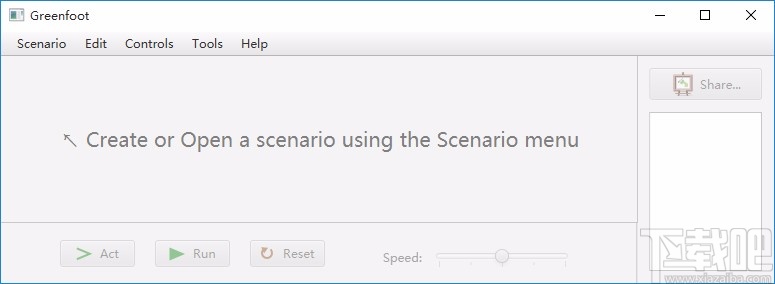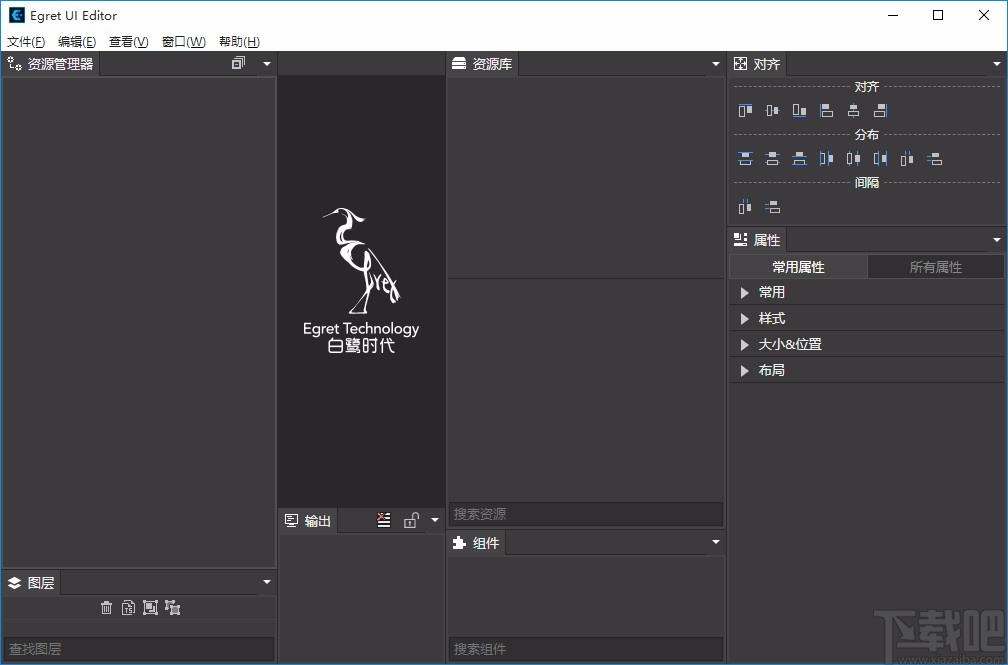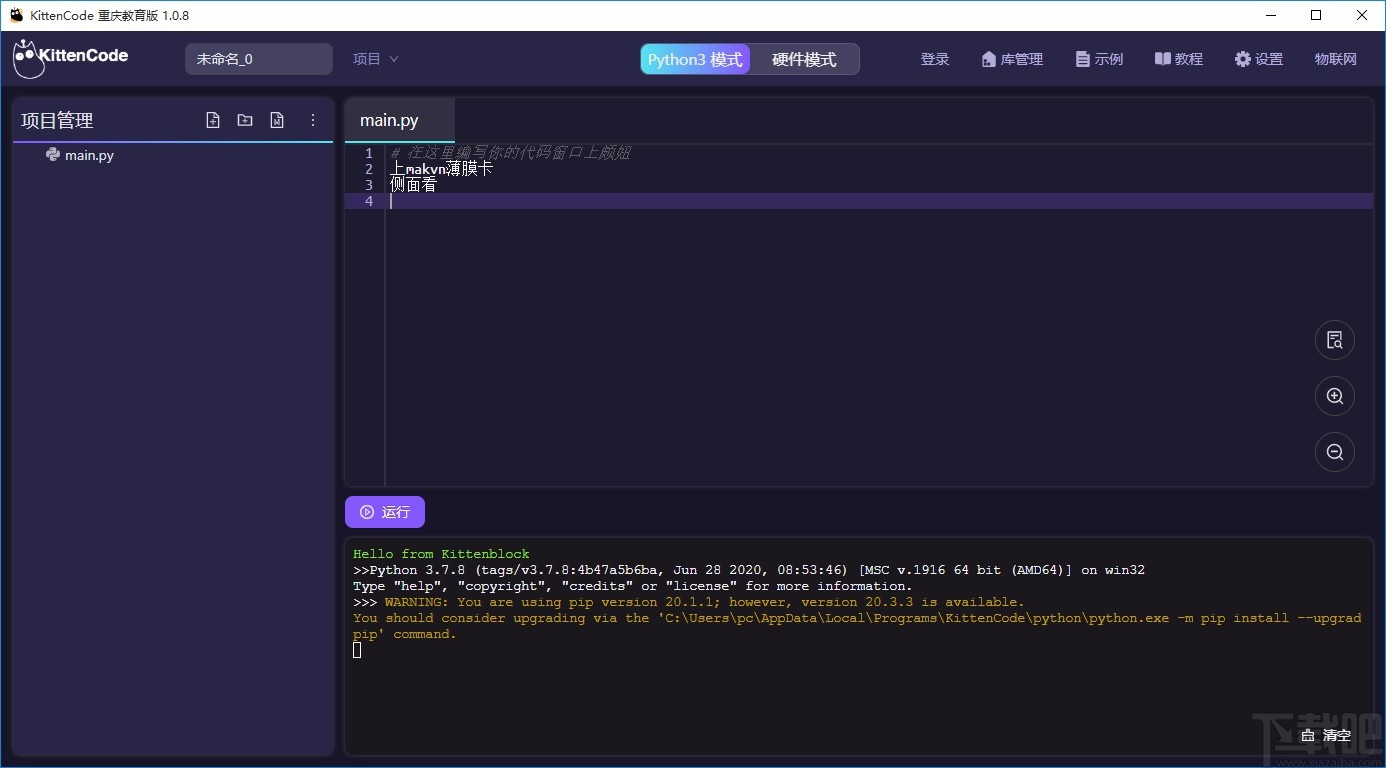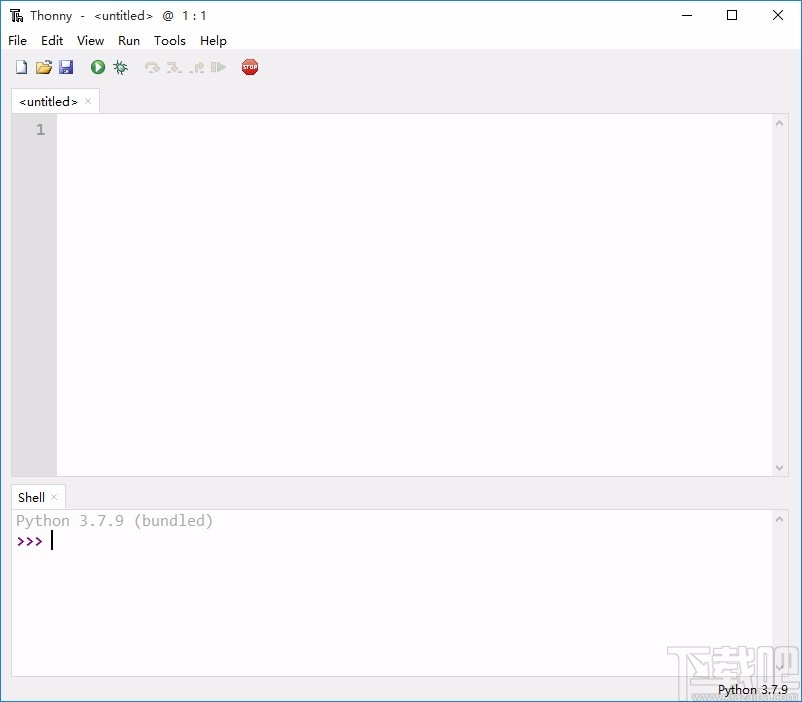Network Working Group R. Hedberg
Request for Comment: 2657 Catalogix
Category: EXPerimental August 1999
LDAPv2 Client vs. the Index Mesh
Status of this Memo
This memo defines an Experimental Protocol for the Internet
community. It does not specify an Internet standard of any kind.
Discussion and suggestions for improvement are requested.
Distribution of this memo is unlimited.
Copyright Notice
Copyright (C) The Internet Society (1999). All Rights Reserved.
Abstract
LDAPv2 clients as implemented according to RFC1777 [1] have no
notion on referral. The integration between sUCh a client and an
Index Mesh, as defined by the Common Indexing Protocol [2], heavily
depends on referrals and therefore needs to be handled in a special
way. This document defines one possible way of doing this.
1. Background
During the development of the Common Indexing Protocol (CIP), one of
the underlying assumptions was that the interaction between clients
and the Index Mesh Servers [1] would heavily depend on the passing of
referrals. Protocols like LDAPv2 [2] that lack this functionality
need to compensate for it by some means. The way chosen in this memo
is to add more intelligence into the client. There are two reasons
behind this decision. First, this is not a major enhancement that is
needed and secondly, that the intelligence when dealing with the
Index Mesh, with or the knowledge about referrals, eventually has to
go into the client.
2. The clients view of the Index Mesh
If a LDAPv2 client is going to be able to interact with the Index
Mesh, the Mesh has to appear as something that is understandable to
the client. Basically, this consists of representing the index
servers and their contained indexes in a defined Directory
information tree (DIT) [3,4] structure and a set of object classes
and attribute types that have been proven to be useful in this
context.
2.1 The CIP Object Classes
Object class descriptions are written according to the BNF defined in
[5].
2.1.1 cIPIndex
The cIPIndex objectClass, if present in a entry, allows it to hold
one indexvalue and information connected to this value.
( 1.2.752.17.3.9
NAME "cIPIndex"
SUP "top"
STRUCTURAL
MUST ( extendedDSI $ idx )
MAY ( indexOCAT )
)
2.1.2 cIPDataSet
The cIPDataSet objectClass, if present in a entry, allows it to hold
information concerning one DataSet.
( 1.2.752.17.3.10
NAME "cIPDataSet"
SUP "top"
STRUCTURAL
MUST ( dSI $ searchBase )
MAY ( indexOCAT $ description $ indexType $
AccessPoint $ protocolVersion $ polledBy $
updateIntervall $ securityOption $
supplierURI $ consumerURI $ baseURI $
attributeNamespace $ consistencyBase
)
)
2.2 The CIP attributeTypes
The attributes idx, indexOCAT, extendedDSI, description,
cIPIndexType, baseURI, dSI are used by a client accessing the index
server. The other attributes (accesspoint, protocolVersion,
polledBy, updateIntervall, consumerURI, supplierURI and
securityOption, attributeNamespace, consistencyBase) are all for
usage in server to server interactions.
2.2.1 idx
The index value, normally used as part of the RDN.
( 1.2.752.17.1.20
NAME "idx"
EQUALITY caseIgnoreIA5Match
SYNTAX IA5String
SINGLE-VALUE
)
2.2.2 dSI
DataSet Identifier, a unique identifier for one particular set of
information. This should be an OID, but stored in a stringformat.
( 1.2.752.17.1.21
NAME "dSI"
EQUALITY caseIgnoreIA5Match
SYNTAX IA5String
)
2.2.3 indexOCAT
Describes the type of data that is stored in this entry, by using
objectcClasses and attributeTypes. The information is stored as a
objectClass name followed by a space and then an attributeType name.
A typical example when dealing with whitepages information would be
"person cn".
( 1.2.752.17.1.28
NAME "indexOCAT"
EQUALITY caseIgnoreIA5Match
SYNTAX IA5String
)
2.2.5 supplierURI
A URI describing which protocols, hostnames and ports should be used
by an indexserver to interact with servers carrying indexinformation
representing this dataSet.
( 1.2.752.17.1.22
NAME "supplierURI"
EQUALITY caseIgnoreIA5Match
SYNTAX IA5String
)
2.2.6 baseURI
The attribute value for this attribute is a LDAP URI. One can
envisage other URI syntaxes, if the client knows about more access
protocols besides LDAP, and the interaction between the client and
the server can not use referrals for some reason.
( 1.2.752.17.1.26
NAME "baseURI"
EQUALITY caseExactIA5Match
SYNTAX IA5String
)
2.2.7 protocolVersion
At present, the Common Indexing Protocol version should be 3.
( 1.2.752.17.1.27
NAME "protocolVersion"
EQUALITY numericStringMatch
SYNTAX numericString
)
2.2.8 cIPIndexType
The type of index Object that is used to pass around index
information.
( 1.2.752.17.1.29
NAME "cIPIndexType"
EQUALITY caseIgnoreIA5Match
SYNTAX IA5String
)
2.2.10 polledBy
The Distinguished Name of Index servers that polls data from this
indexserver.
( 1.2.752.17.1.30
NAME "polledBy"
EQUALITY distinguishedNameMatch
SYNTAX DN
)
2.2.11 updateIntervall
The maximum duration in seconds between the generation of two updates
by the supplier server.
( 1.2.752.17.1.31
Name "updateIntervall"
EQUALITY numericStringMatch
SYNTAX numericString
SINGLE-VALUE
)
2.2.12 securityOption
Whether and how the supplier server should sign and encrypt the
update before sending it to the consumer server.
( 1.2.752.17.1.32
NAME "securityOption"
EQUALITY caseIgnoreIA5Match
SYNTAX IA5String
SINGLE-VALUE
)
2.2.13 extendedDSI
DataSet Identifier possibly followed by a space and a taglist, the
later as specified by [6].
( 1.2.752.17.1.33
NAME "extendedDSI"
EQUALITY caseIgnoreIA5Match
SYNTAX IA5String
)
2.2.14 consumerURI
A URI describing which means a server can accept indexinformation.
An example being a mailto URI for MIME email based index transport.
( 1.2.752.17.1.34
NAME "consumerURI"
EQUALITY caseExactIA5Match
SYNTAX IA5String
)
2.2.15 attributeNamespace
Any consumer supplier pair has to agree on what attribute that should
be used and also possibly the meaning of the attributenames. The
value of this attribute should, for example, be a URI pointing to a
document wherein the agreement is described.
( 1.2.752.17.1.35 NAME "attributeNamespace" EQUALITY
caseExactIA5Match SYNTAX IA5String
)
2.2.16 consistencyBase
This attribute is specifically used by consumer supplier pairs that
use the tagged index object [6].
( 1.2.752.17.1.36
NAME "consistencyBase"
EQUALITY caseExactIA5Match
SYNTAX IA5String
)
3. The interaction between a client and the Index Mesh
A client interaction with the Index Mesh consists of a couple of
rather well defined actions. The first being to find a suitable index
to start with, then to transverse the Index Mesh and finally to query
the servers holding the original data. Note when reading this text
that what is discussed here is the client"s perception of the DIT,
how it is in fact implemented is not discussed.
3.1 Finding a Index Mesh
This approach depends on the fact that every index server partaking
in an Index Mesh is represented in the DIT by a entry of the type
cIPDataSet, and has a distinguished name (DN) which most significant
relative distinguished name (RDN) has the attributetype dSI.
Therefore, finding a suitable indexserver to start the search from is
a matter of searching the DIT at a suitable place for objects with
the objectClass cIPIndexObject. Every found entry can then be
evaluated by looking at the description value as well as the
indexOCAT value. The description string should be a human readable
and understandable text that describes what the index server is
indexing. An example of such a string could be, "This index covers
all employees at Swedish Universities and University Colleges that
has an email account". The indexOCAT attribute supplies information
about which kind of entries and which attributes within these entries
that the index information has emanated from. For example, if the
indexOCAT attribute value is "person cn", one can deduce that this is
an index over persons and not over roles, and that it is the
attribute commonName that is indexed.
3.2 Searching the mesh
Each index server has its information represented in the DIT as a
very flat tree. In fact, it is only one level deep.
0 Indexservers cIPDataSet
/
/
/
0 0
cIPDataSet entries cIPIndex entries
one for each DataSet one for each index value
that this server has that this indexserver
gathered indexes from. has.
A search then consists of a set of searches. The first being the
search for the index entries that contains an indexvalue that matches
what the user is looking for, and the second a search based on the
DSI information in the extendedDSI attribute values returned from the
first search. In the case of the the cIPIndexType being tagged-
index, the taglists should be compared to find which DSI it might be
useful to pose further queries to.
When doing these types of searches, the client should be aware of the
fact that the index values disregarding their origin (attributeTypes)
always are stored in the index server as values of the idx attribute.
The object of the second search is to get information on the
different DataSet involved, and should normally be performed as a
read. Since the DataSet information probably will remain quite stable
over time, this information lends itself very well to caching. If at
this stage there is more than one DataSet involved, the User
interface might use the description value to aid the user in choosing
which one to proceed with. The content of the searchBase value of
the DataSet tells the client whether it represents another index
server (the most significant part of the dn is a dSI attribute) or if
it is a end server.
3.3 Querying the end server
When finally reaching the end server/servers that probably has the
sought for information, the information in the indexOCAT attribute
can be used to produce an appropriate filter. If a search for "Rol*"
in an index having an indexOCAT attribute value of "person cn"
returns an idx entry with the idx value of "Roland", then an
appropriate filter to use might be "&((cn=* roland *)(cn=roland
*)(cn=* roland))(objectclass=person)". A complete example of a
search process is given in Appendix A.
4. Security Considerations
Since this memo deals with client behavior, it does not add anything
that either enhances or diminishes the security features that exists
in LDAPv2.
5. Internationalization
As with security, this memo neither enhances or diminishes the
handling of internationalization in LDAPv2.
6. References
[1] Yeong, W., Howes, T. and S. Kille, "Lightweight Directory Access
Protocol", RFC1777, March 1995.
[2] Allen, J. and M. Mealling "The Architecture of the Common
Indexing Protocol (CIP)", RFC2651, August 1999.
[3] The Directory: Overview of Concepts, Models and Service. CCITT
Recommendation X.500, 1988.
[4] Information Processing Systems -- Open Systems Interconnection --
The Directory: Overview of Concepts, Models and Service. ISO/IEC
JTC 1/SC21; International Standard 9594-1, 1988.
[5] Wahl, M., Coulbeck, A., Howes, T. and S. Kille, "Lightweight
Directory Access Protocol (v3): Attribute Syntax Definitions",
RFC2252, December 1997.
[6] Hedberg, R., Greenblatt, B., Moats, R. and M. Wahl, "A Tagged
Index Object for use in the Common Indexing Protocol", RFC2654,
August 1999.
7. Author"s Address
Roland Hedberg
Catalogix
Dalsveien 53
0387 Oslo, Norway
Phone: +47 23 08 29 96
EMail: roland@catalogix.ac.se
Appendix A - Sample Session
Below is a sample of a session between a LDAPv2 client and an index
server mesh as specified in this memo.
The original question of the session is to find the email address of
a person by the name, "Roland Hedberg", who is working at "Umea
University" in Sweden.
Step 1.
A singlelevel search with the baseaddress "c=SE" and the filter
"(objectclass=cipDataset)" was issued.
The following results were received:
DN: dSI=1.2.752.17.5.0,c=SE
dsi= 1.2.752.17.5.0
description= "index over employees with emailaddresses within Swedish
higher education"
indexOCAT= "cn person"
cIPIndexType= "x-tagged-index-1" ;
searchBase= "dsi=1.2.752.17.5.0,c=SE"
protocolVersion = 3
DN: dSI=1.2.752.23.1.3,c=SE
dsi= 1.2.752.23.1.3
description= "index over Swedish lawyers"
indexOCAT= "cn person"
cIPIndexType= "x-tagged-index-1" ;
searchBase= "dsi=1.2.752.23.1.3,c=SE"
protocolVersion = 3
Step 2.
Since the first index seemed to cover the interesting population, a
single level search with the baseaddress "dsi=1.2.752.17.5.0,c=SE"
and the filter "((idx=roland)(idx=hedberg))" was issued.
The following results were received:
DN: idx=Roland,dSI=1.2.752.17.5.0,c=SE
idx= Roland
extendedDSI= 1.2.752.17.5.10 1,473,612,879,1024
extendedDSI= 1.2.752.17.5.14 35,78,150,200
extendedDSI= 1.2.752.17.5.16 187,2031,3167,5284,6034-6040
extendedDSI= 1.2.752.17.5.17 17
DN: idx=Hedberg,dSI=1.2.752.17.5.0,c=SE
idx= Hedberg
extendedDSI= 1.2.752.17.5.8 24,548-552,1066
extendedDSI= 1.2.752.17.5.10 473,512,636,777,1350
extendedDSI= 1.2.752.17.5.14 84,112,143,200
extendedDSI= 1.2.752.17.5.15 1890-1912
extendedDSI= 1.2.752.17.5.17 44
A comparison between the two sets of extendedDSIs shows that two
datasets 1.2.752.17.5.10 and 1.2.752.17.5.14 contains persons named
"Roland" and "Hedberg". Therefore, the next step would be to see what
the datasets represent. A comparison like this should normally not
be left to the user.
Step. 3
Two baselevel searches, one for
"dsi=1.2.752.17.5.10,dsi=1.2.752.17.5.0,c=SE" and the other for
"dsi=1.2.752.17.5.14,dsi=1.2.752.17.5.0,c=SE" with the filter
"(objectclass=cipdataset)" were issued.
The following results were received:
DN: dSI=1.2.752.17.5.10,dSI=1.2.752.17.5.0,c=SE
dsi= 1.2.752.17.5.10
description= "Employees at Umea University,Sweden"
indexOCAT= "person cn"
searchBase= "o=Umea Universitet,c=SE"
respectively
DN: dSI=1.2.752.17.5.14,dSI=1.2.752.17.5.0,c=SE
dsi= 1.2.752.17.5.14
description= "Employees at Lund University,Sweden"
indexOCAT= "person cn"
searchBase= "o=Lunds Universitet,c=SE"
Step 4
Based on the descriptions for the two datasets, "1.2.752.17.5.10" was
chosen as the best to proceed with. From the searchbase attribute
value, it was clear that this was a base server. The query now has
to be somewhat modified. One possibility would be to issue a query
with the baseobject "o=Umea Universitet,c=SE" and the filter
"(&(cn=Roland Hedberg)(objectclass=person))"
Full Copyright Statement
Copyright (C) The Internet Society (1999). All Rights Reserved.
This document and translations of it may be copied and furnished to
others, and derivative works that comment on or otherwise explain it
or assist in its implementation may be prepared, copied, published
and distributed, in whole or in part, without restriction of any
kind, provided that the above copyright notice and this paragraph are
included on all such copies and derivative works. However, this
document itself may not be modified in any way, such as by removing
the copyright notice or references to the Internet Society or other
Internet organizations, except as needed for the purpose of
developing Internet standards in which case the procedures for
copyrights defined in the Internet Standards process must be
followed, or as required to translate it into languages other than
English.
The limited permissions granted above are perpetual and will not be
revoked by the Internet Society or its successors or assigns.
This document and the information contained herein is provided on an
"AS IS" basis and THE INTERNET SOCIETY AND THE INTERNET ENGINEERING
TASK FORCE DISCLAIMS ALL WARRANTIES, EXPRESS OR IMPLIED, INCLUDING
BUT NOT LIMITED TO ANY WARRANTY THAT THE USE OF THE INFORMATION
HEREIN WILL NOT INFRINGE ANY RIGHTS OR ANY IMPLIED WARRANTIES OF
MERCHANTABILITY OR FITNESS FOR A PARTICULAR PURPOSE.
Acknowledgement
Funding for the RFCEditor function is currently provided by the
Internet Society.




